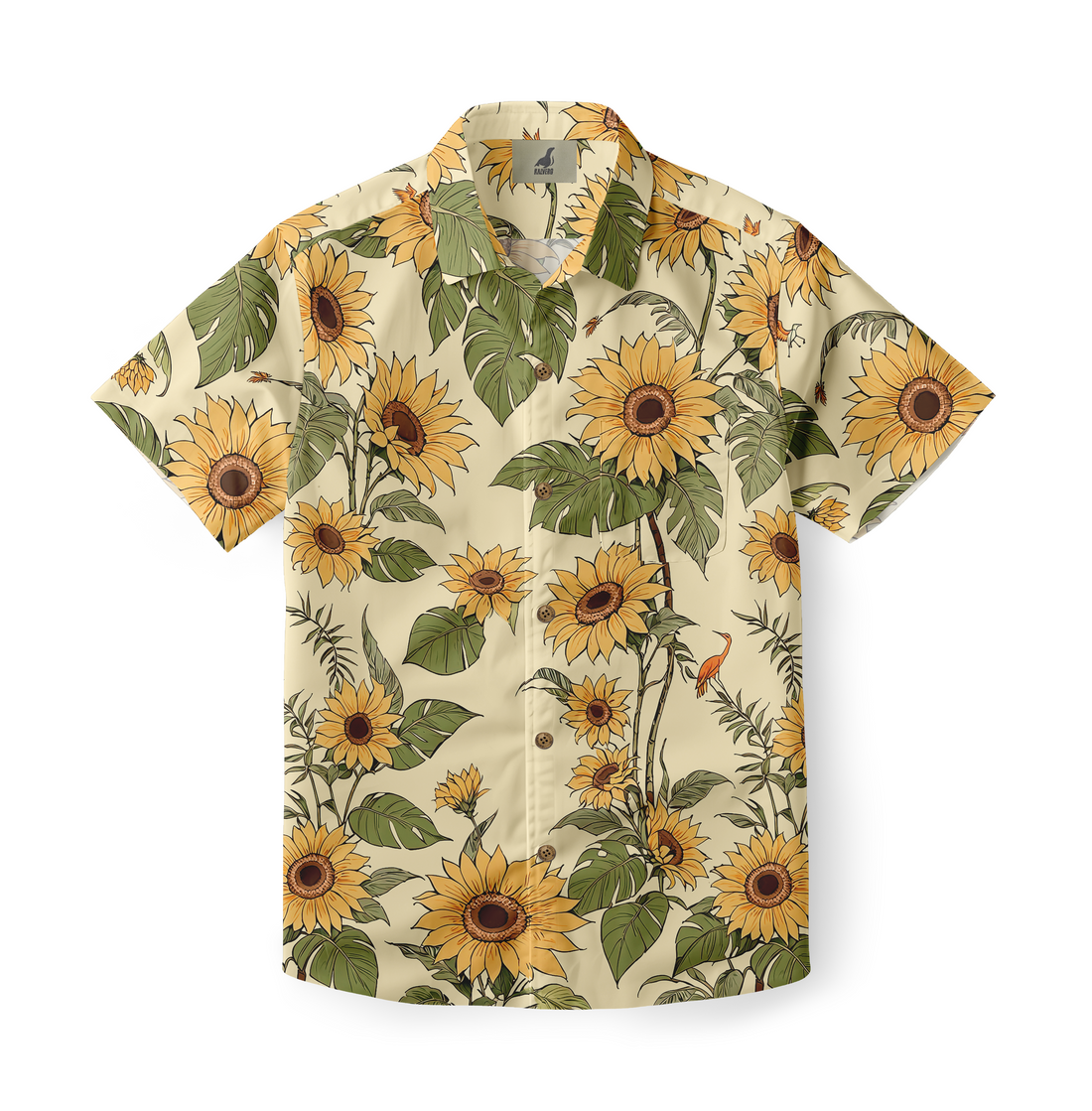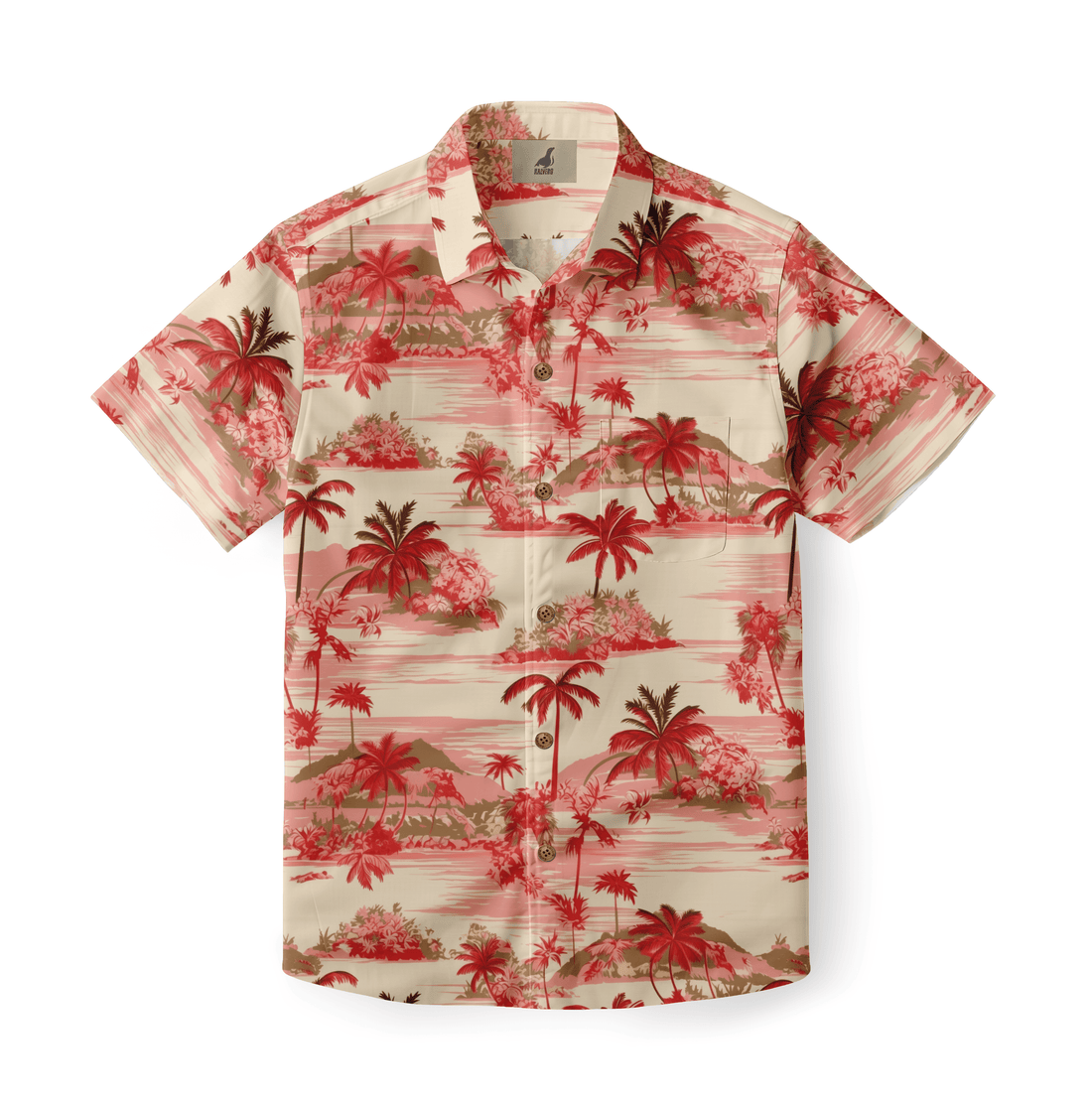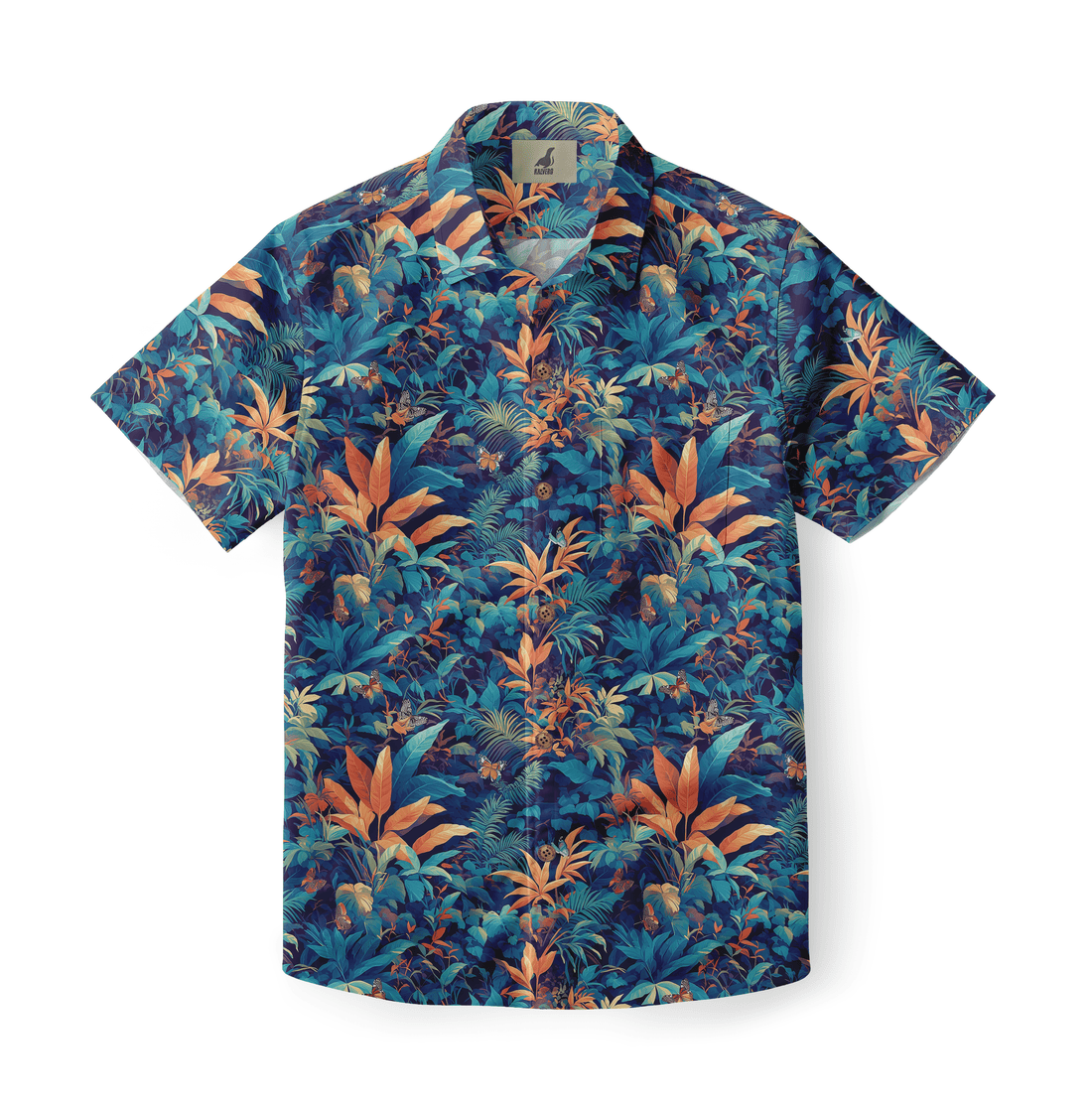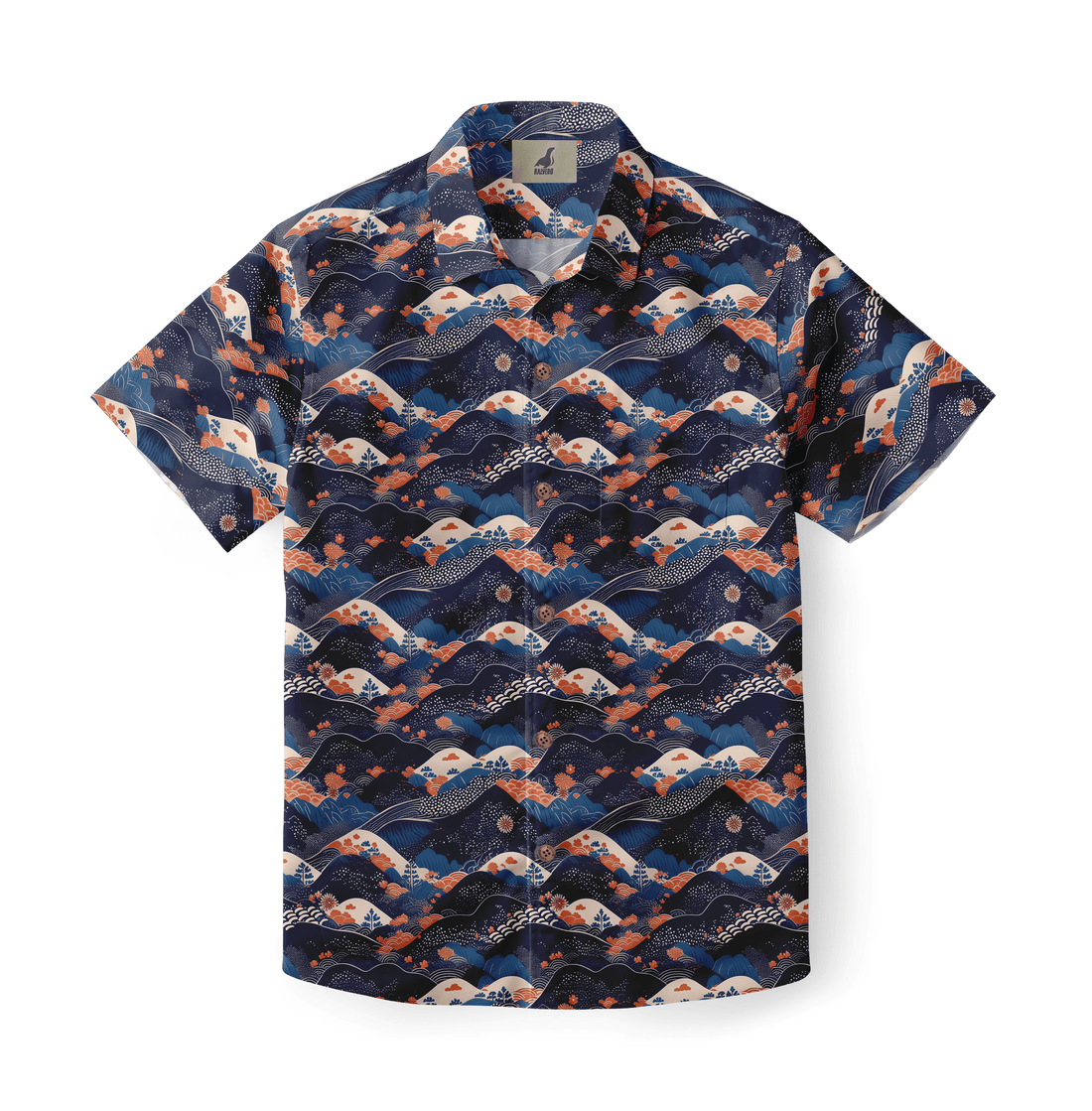The Symbolism Behind Hawaiian Shirts carries vibrant history and deep cultural meaning. These shirts originated from early 20th-century Hawaii, blending local motifs with Asian and Western influences. Bright florals, tropical leaves, and oceanic imagery symbolize nature’s abundance, leisure, and island life. Wearing Hawaiian shirts conveys relaxation and casual sophistication. Merchants and tourists adopted these garments as both souvenir and fashion statement. Beyond visuals, shirts reflect historical migration, trade networks, and artistic expression. Each pattern can communicate specific messages, including celebration, hospitality, or local pride. Designers today honor these symbols while creating contemporary variations. Cultural respect and pattern accuracy enhance authenticity. Hawaiian shirts have become globally recognized icons of laid-back style. Their symbolism persists across fashion decades. Collectors value rare prints for historical and aesthetic significance. In wholesale and retail, these shirts convey tropical storytelling effectively.
Origins and Cultural Roots
The Symbolism Behind Hawaiian Shirts traces to the 1930s when Japanese and local textile techniques merged. Early aloha shirts featured hand-printed floral designs on cotton. Migrant workers and plantation communities influenced patterns, colors, and styles. These shirts represent multicultural fusion, blending Hawaiian flora with Asian motifs like cherry blossoms or koi. Early shirts functioned as both everyday wear and ceremonial garments. They signify hospitality, community connection, and seasonal celebration. Westerners popularized aloha shirts through tourism and marketing in mid-20th century. Traditional makers emphasize authentic dye methods and handcrafting skills. Each design reflects respect for nature and human connection. Hawaiian shirts also embody informal social etiquette, signaling openness. Symbolism connects wearers to island heritage. Production for wholesale today balances authentic patterns with mass-producible fabrics. Heritage prints maintain storytelling while enabling scalable collections. Consistent design archives preserve the shirt’s historical narrative.
Tropical Motifs and Iconography
The Symbolism Behind Hawaiian Shirts emerges vividly through tropical motifs. Hibiscus flowers, palm fronds, and plumeria represent warmth, welcome, and beauty. Birds of paradise and native fauna highlight biodiversity and leisure. Ocean waves and surf imagery suggest freedom and adventure. Each icon communicates specific Hawaiian cultural ideals. Designers often layer motifs to enhance visual storytelling. Placement of patterns can signify subtle social cues or rank during historical periods. In modern apparel, these symbols appeal to nostalgia and exoticism. Wholesale collections often categorize motifs for targeted marketing. Pattern repetition, scale, and color choices influence visual impact. Authenticity requires careful reproduction respecting traditional color palettes. Cultural motifs add depth beyond decorative function. They transform shirts into wearable narratives with global recognition. Consumers increasingly value shirts that honor original meanings. Proper attribution improves retailer credibility. Retailers leverage symbolic motifs in seasonal promotions and storytelling campaigns.
Colors, Patterns, and Messages
Colors on Hawaiian shirts carry symbolic weight beyond aesthetics. Bright reds convey energy and passion, while greens reflect vitality and island flora. Blues and turquoises evoke the ocean and serenity. Pattern density, background contrast, and layering amplify meaning. Shirts with subtle earth tones indicate understated elegance. Some patterns indicate festival wear or celebratory contexts. Designers strategically combine color, scale, and motif to transmit desired moods. Wholesale buyers rely on these cues to align product messaging with market demand. Patterns often follow rhythmic repetition to enhance visual harmony. Color fades or overprints affect symbolism perception. Combining traditional palettes with contemporary hues expands appeal without diluting meaning. Careful planning ensures collections retain cultural resonance. Iconic color-motif pairings remain attractive in global fashion markets. Strategic merchandising integrates symbolism into storytelling. Proper interpretation maintains historical integrity while appealing to modern consumers.
Five iconic symbolic motifs in Hawaiian shirts
-
Hibiscus flower: represents beauty and delicate charm
-
Palm fronds: indicate tropical life and relaxation
-
Plumeria: symbolizes positivity and celebration
-
Tiki figures: cultural guardians and ancestral respect
-
Surf imagery: denotes freedom and adventure
Symbolic Motifs in Hawaiian Shirts: Practical Applications
Symbolic motifs guide design, marketing, and retail placement. Hibiscus-centered prints work well in casual or semi-formal designs. Palm motifs pair with neutral backgrounds for summer collections. Plumeria patterns suit wedding or bridal-themed lines. Tiki symbols appear in collector or festival editions. Surf imagery integrates into resort or adventure-themed products. Wholesale planners benefit from categorizing motifs by consumer occasion. Proper documentation of motif meaning ensures cultural respect. Merchandising strategy aligns motifs with seasonal peaks and promotional calendars. Collections can mix motifs to create layered storytelling effects. Careful selection preserves heritage while enhancing market relevance. Wholesale buyers increasingly request motif explanations for retail narratives. In-store signage often highlights the symbolism to engage customers.
Fabric Choices and Their Symbolic Implications
Fabric selection affects both aesthetics and symbolic resonance. Cotton represents comfort, warmth, and breathability. Rayon or silk blends convey premium feel and fluidity. Textured weaves suggest artisanal quality and heritage. Lightweight fabrics support summer leisure wear symbolism. Choice of fabric also impacts motif reproduction clarity. Higher thread counts allow precise pattern printing. Sustainable fabrics emphasize environmental respect, reinforcing cultural storytelling. Wholesale production balances fabric quality with cost-effectiveness. Fabric influences drape, silhouette, and consumer experience. Selecting the right textile enhances both visual and tactile symbolism. Attention to tactile quality strengthens perceived authenticity. Proper sourcing ensures alignment with original Hawaiian shirt heritage. Bulk orders require consistency across dye lots.
| Motif | Symbolism | Modern Interpretation |
| Hibiscus | Beauty and charm | Casual elegance and tropical vibes |
| Palm Frond | Relaxation and leisure | Summer resort wear and lifestyle appeal |
| Plumeria | Positivity and celebration | Wedding or festival collections |
| Tiki | Guardian and ancestry | Collector editions and cultural homage |
| Surf | Freedom and adventure | Activewear and resort lifestyle |
The table above shows motif symbolism and modern usage. Hibiscus conveys casual elegance, while palm fronds suit resort leisure themes. Plumeria integrates into celebratory collections. Tiki figures honor cultural heritage in collector lines. Surf imagery emphasizes adventure and active lifestyle branding. Wholesale buyers reference the table to maintain design consistency. Understanding these symbolic implications guides marketing and positioning. Fabric and motif coordination ensures the desired visual message. Consumers value apparel reflecting authentic cultural narratives. Retailers leverage symbolism in seasonal campaigns. Proper documentation of motif meaning strengthens product storytelling across channels.
The Symbolism Behind Hawaiian Shirts: Evolution Through Decades
Shirt symbolism has evolved alongside fashion trends. In the 1930s, hand-printed floral cotton shirts represented local pride. Post-WWII tourism expanded motifs to attract global visitors. 1970s and 1980s fashion incorporated bolder colors and abstract motifs. Modern designers mix classic and contemporary patterns, sometimes integrating pop-culture references. Symbolism remains central to appeal. Evolution reflects social, economic, and aesthetic changes. Wholesale buyers benefit from historical context to curate balanced collections. Recognizing trends allows predictive planning for seasonal demand. Shirts serve as both nostalgic artifacts and modern fashion statements. Cultural respect in reinterpretation maintains symbolic integrity. Production choices preserve heritage while allowing creative updates. Retailers emphasize storytelling through historical narratives.
Social Significance and Fashion Statements
Hawaiian shirts communicate social intent beyond leisure. Wearing an aloha shirt can indicate relaxation, friendliness, and openness. In business or casual gatherings, shirts symbolize informal confidence. Certain patterns or colors may align with festivals, holidays, or group identity. Collectors value rare vintage motifs for historical significance. Fashion-forward adaptations maintain symbolism while appealing to broader markets. Wholesale strategies incorporate social messaging into collection curation. Retail campaigns highlight shirt versatility for social and cultural contexts. Proper pattern selection strengthens consumer resonance. Shirts remain conversation starters due to recognizable imagery. Social significance influences buying decisions and repeat purchases. Balancing cultural meaning with contemporary fashion enhances appeal. Retailers convey narrative in store displays to educate buyers.
Styling Tips While Respecting Meaning
Styling respects both symbolism and contemporary fashion. Pair neutral trousers or shorts with floral shirts for balanced visual impact. Avoid mixing too many tropical motifs to prevent clutter. Accessories like sandals or straw hats reinforce island-inspired messages. Choose fabrics that match event context; linen and cotton for casual, silk blends for premium occasions. Color coordination amplifies intended symbolism, such as pairing warm tones for energy. Wholesale buyers often provide styling suggestions for in-store signage. Retailers can bundle complementary items to encourage complete outfits. Respectful styling preserves heritage meaning. Shirt cuffing or layering allows versatility without altering primary motifs. Consumers appreciate styling advice that aligns with cultural context. Proper retail curation maintains brand integrity while promoting sales.
Frequently Asked Questions
Why do Hawaiian shirts carry specific floral symbolism?
Hawaiian shirts originated in a multicultural environment blending Japanese, Chinese, and native Hawaiian textile traditions. Floral patterns often denote nature, celebration, or welcoming gestures. Hibiscus, plumeria, and palm motifs communicate distinct messages. Designers and retailers emphasize motif placement to convey intended symbolism. Patterns can indicate social occasions or seasonal relevance. Wholesale collections use historical references to educate consumers. Proper motif usage enhances authenticity and strengthens brand storytelling. Symbolic choices influence marketing, consumer perception, and retail positioning. Awareness of cultural meaning ensures shirts retain heritage significance. Thoughtful implementation fosters connection between apparel and wearer identity.
How can retailers honor symbolism in Hawaiian shirts while appealing to modern consumers?
Retailers must balance tradition with contemporary aesthetics. Using authentic patterns, color palettes, and fabric selections preserves original symbolism. Modern silhouettes, scaled prints, and mix-and-match options appeal to current tastes. Informative labeling or marketing copy explains symbolic significance without reducing appeal. Wholesale orders should include tech packs highlighting motif integrity. Consumers respond positively to products reflecting authentic heritage while remaining fashionable. Consistency across fabrics, motifs, and colors reinforces brand credibility. Retailers may integrate styling guides, social media campaigns, or seasonal displays. Educated presentation strengthens engagement. Preserving symbolism enhances perceived product value. Thoughtful curation fosters repeat purchase behavior and loyalty.
What role does color play in conveying the symbolism of Hawaiian shirts?
Colors significantly impact perceived meaning and emotional resonance. Reds symbolize energy and passion; greens reflect growth and vitality. Blues evoke oceanic serenity, while pastel shades suggest romantic








